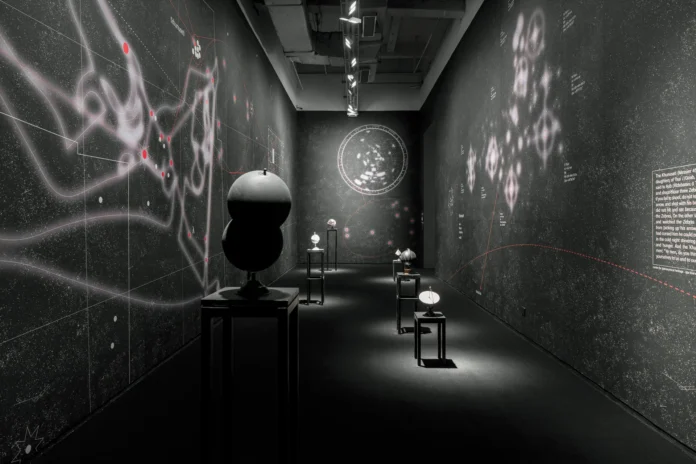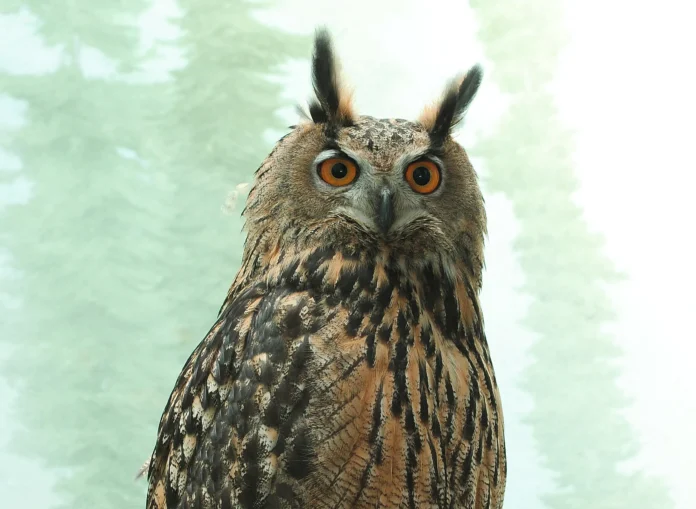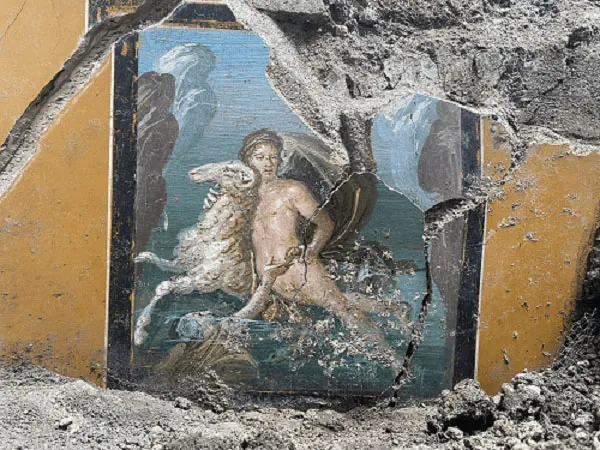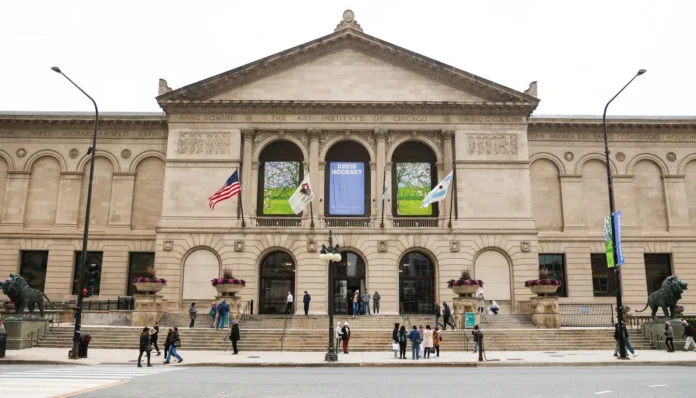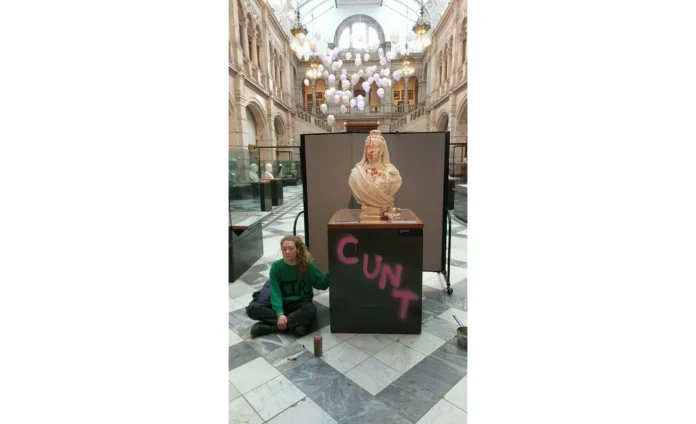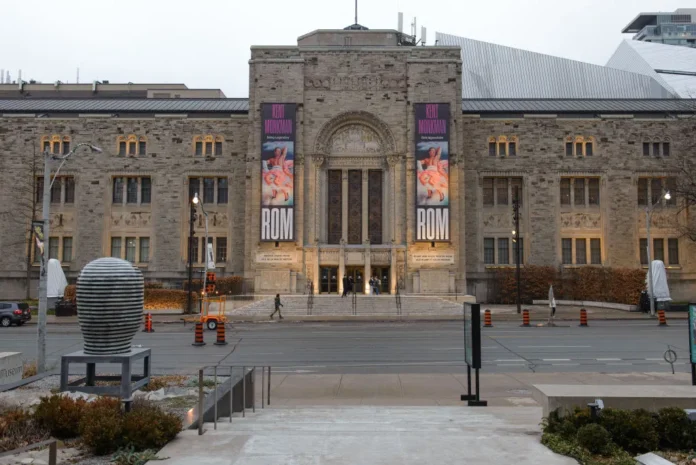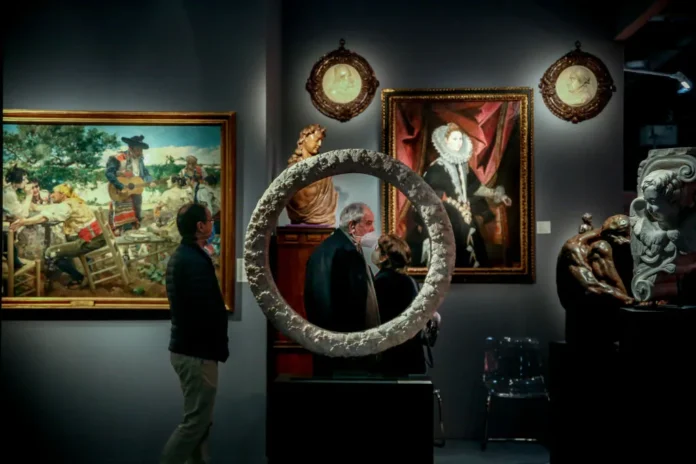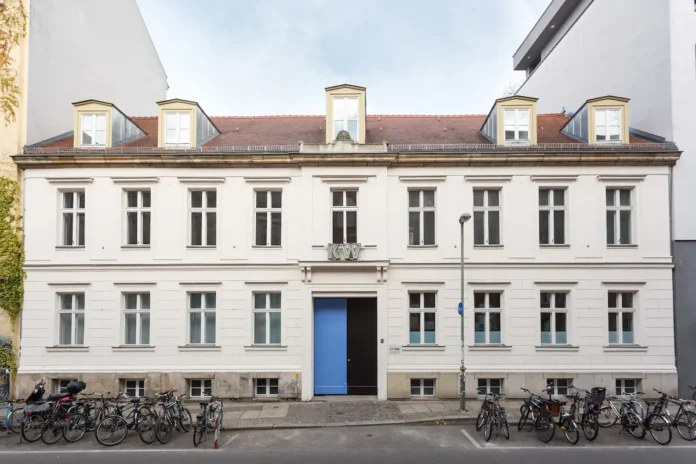Before it won me over, Shubigi Rao’s exhibition at Shanghai’s Rockbund Art Museum, titled “These Petrified Paths,” gave me pause. Rao’s installations and videos concern the Armenian genocide as well as earthly extraction and the destruction of books—and the parallels she draws between them left me skeptical. She says the works, made between 2003 and 2023, are meant to show “how the normality of our daily lives relies on violence.”
I care deeply about the nonhuman world, yet I hesitated at Rao’s suggestion that oil extraction, banned books, and ethnic cleansing belong together under the umbrella of “violence.” In a talk at the opening of her show, however, Rao convincingly insisted that the parallels are by no means metaphorical and, rather, relate to tragedies that are deeply intertwined. Armenian people, the artist said, “have only rocks and dust.” Then she pointed out how Euro-American countries offer aid to peoples rich with oil but seem less concerned with the plight of those without. Attesting to the entanglement of electric and geopolitical power, a 40-foot sculpture of an energy pylon shoots up the central cavity of the museum, as if extracting energy while it stands tall to transmit stories berkahpoker.
Rao, who represented Singapore in the 2022 Venice Biennale, has long devoted her practice to narratives both censored and untold, deftly weaving together seemingly disparate topics. The Rockbund commissioned a new feature-length film, These Petrified Paths, that centers on the preservation of manuscripts by forgotten Armenian feminist writers, as well as on the work of women librarians preserving those texts. The film advocates preserving Armenian culture alongside Armenian life. Surrounding the projection screen is a sinuous vitrine in which a black, oil-like liquid flows. Elsewhere, on the wall, a provocative footnote ties it all together by asking a question I’ve been chewing on ever since: “What is more short-sighted and fleeting than fossil-fuel reliance, and what has proved more enduring and persistent than the power of story and retelling?” berkahpoker

I was thinking of that footnote—which is really a sort of thesis—as I visited the Shanghai Biennial. There, I read a quote by one of the artists involved, a Filipino filmmaker named Kidlat Tahimik, who, in wall text next to his cinematic installation, states that “colonizers subjugate indigenous people by first destroying their mythologies,” then adds that “we become the stories we consume.” The Shanghai Biennial—like Rao’s exhibition, and other shows that opened as part of Shanghai’s art week in November—offers a chance to think about how we narrate the world around us through both art and science.

This year’s edition, titled “Cosmos Cinema,” concerns the enduring human impulse to explore outer space, literally and metaphorically. Curated by Russian American e-flux founder Anton Vidokle, the giant yet focused exhibition is born of ideas put forth by the Russian Cosmism movement spearheaded by philosopher Nikolai Fedorov, who wrote in 1851 that science, philosophy, art, and social organization were all “equal partners in the common task” of the project of humanity. Artists and scientists alike have long looked to the stars to ask who we are and where we come from. (Carl Sagan memorably described this impulse as “life looks for life.”)

The most compelling works make plain how scientific facts are often narrated from specific points of view. Black Liberation Zodiac (2017–) by Johannesburg-based artist Nolan Oswald Dennis looks to the stars from the perspective of the Southern Hemisphere, where constellations appear different than they do in the North. On intricate astral maps papering the walls of a room, Dennis charts new Zodiac signs, mapping the stars not according to the familiar Eurasian myths but borrowing from the symbology (a panther, a fist) of Black liberation. Our understanding of the universe, Dennis shows, is not universal. Instead, it is a matter of perspective. It’s a reminder to think critically about where ideas come from, and to consider whom certain stories serve.
Sometimes when artists play scientist or ask us to question established truths, I get nervous about how they might play into our culture’s already eroding faith in facts. One such work that made me wonder was by Los Angeles– and Shanghai-based artist Alice Wang, who has on view a grid of glass tiles that form a starry sky as if in 8-bit. The label describes her medium as “leftover radiation from the Big Bang,” casting what is commonly referred to as a theory (that, billions of years ago, a giant explosion suddenly created the entire universe) as certifiable fact—and in an authorless, authoritative, institutional voice.
While art doesn’t always have to be factual, artists should fabulate with caution, as the danger in doing so can’t be overstated. Powerful narratives, as Rao and Tahimik remind us, get ingested whether or not they are true. Fact and fiction both impact the way we understand the world, and that understanding then spills back out. There is no better evidence of this than the Big Bang Theory itself—which originated not in the work of scientists but in that of the great storyteller Edgar Allen Poe, whose 1848 poem “Eureka” sketched out the idea 80 years before scientists started considering the physics behind how it might have worked. His powerful narrative took hold long before we had anything that might constitute evidence.
